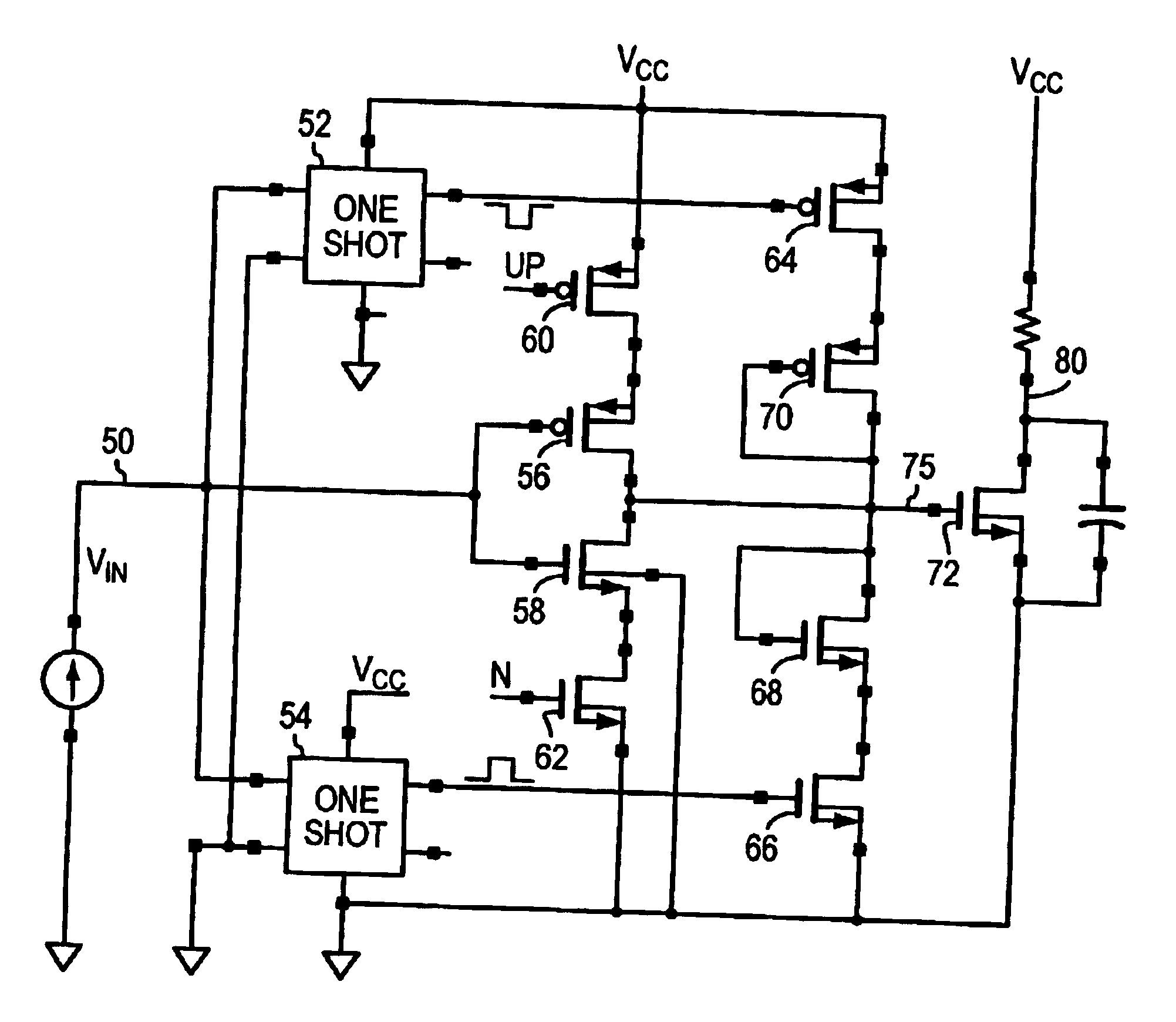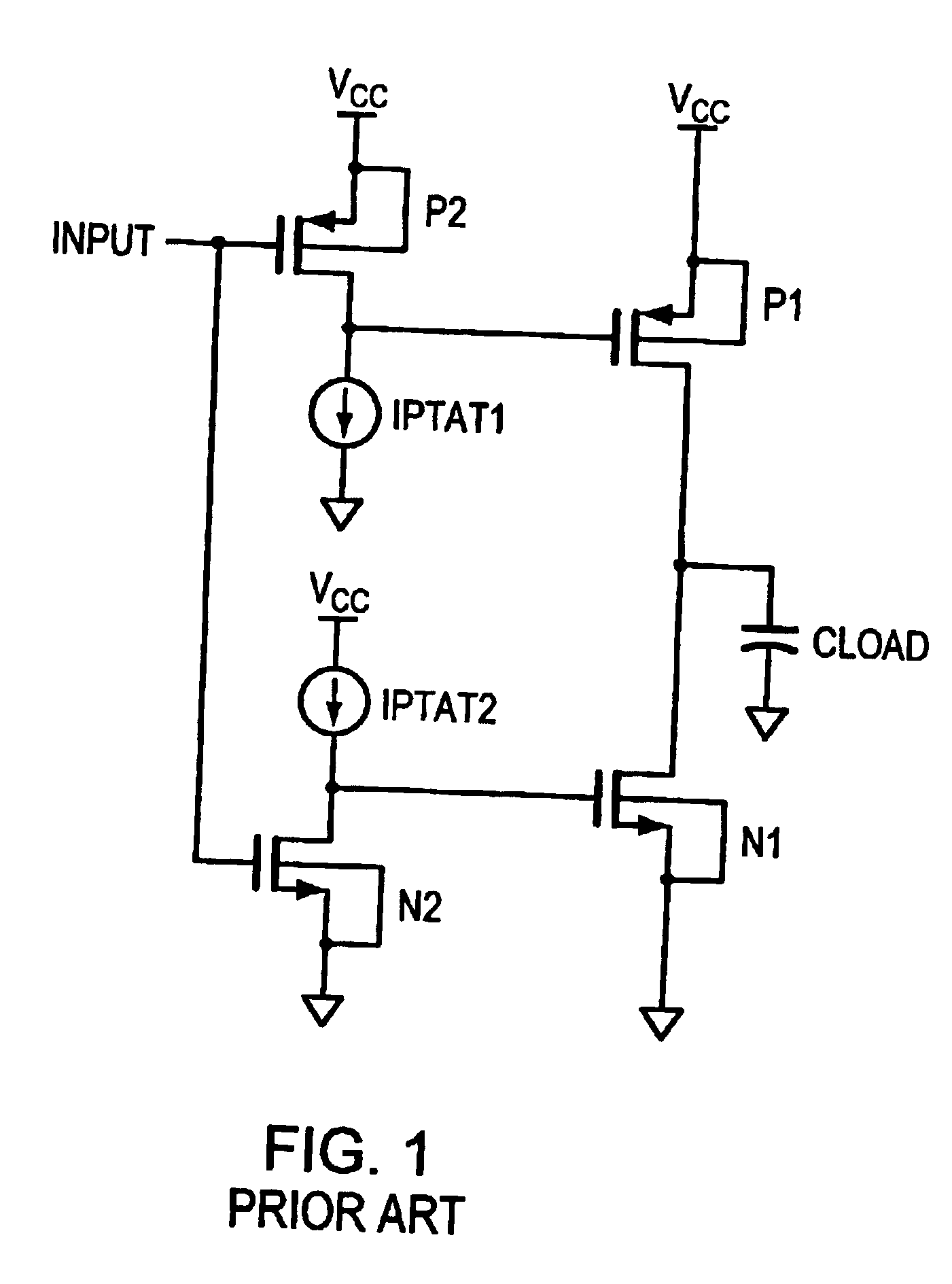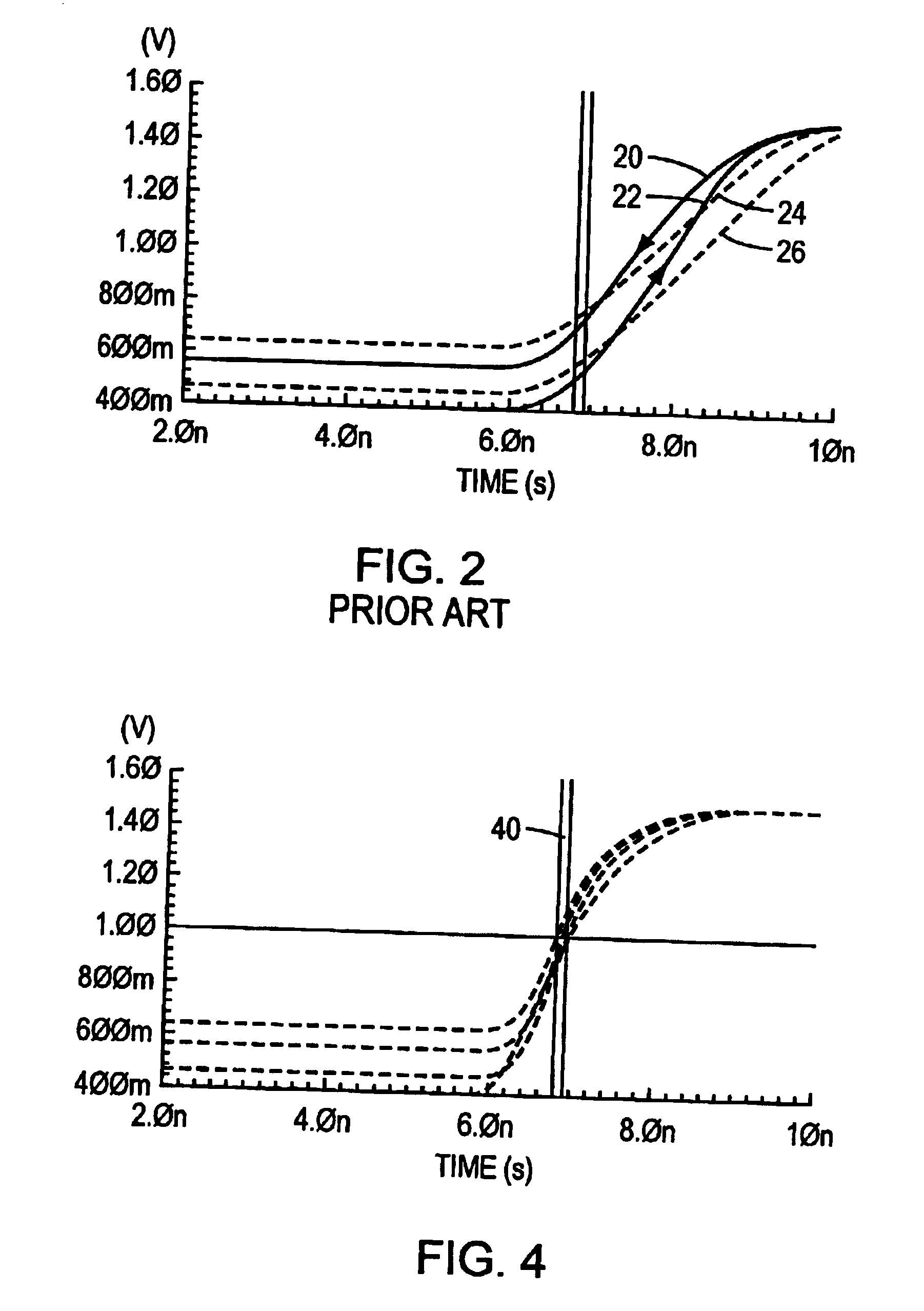Method of reducing the propagation delay and process and temperature effects on a buffer
a technology of applied in the field of reducing the propagation delay and process temperature effect on the buffer, can solve the problems of extended ringing, system errors, uncontrollable interconnection line impedance loading,
- Summary
- Abstract
- Description
- Claims
- Application Information
AI Technical Summary
Benefits of technology
Problems solved by technology
Method used
Image
Examples
Embodiment Construction
. 3 is a schematic illustrating one embodiment of the present invention. The approach is to supply a short "tug" or pull on the gate of the output transistor in the same direction as the current sources of the prior art FIG. 1. The pull drives the gates quickly up to the output transistor thresholds to counter act the delay that would have occurred had only the low current been available to drive the gates. The pull will not affect the slow output edge if the pull is limited to only overcoming the thresholds, e.g. the first few hundred millivolts at the gates. After traversing these first several hundred millivolts of transition, the low current sources 10 and 12 continue to slowly drive the gate thereby producing the slow output edges desired. The edge transitions depend primarily on this finishing drive and so the slow edges are maintained. The pull starts the output moving well before it would have occurred without the present invention and so reduces the delay without affecting ...
PUM
 Login to View More
Login to View More Abstract
Description
Claims
Application Information
 Login to View More
Login to View More - R&D
- Intellectual Property
- Life Sciences
- Materials
- Tech Scout
- Unparalleled Data Quality
- Higher Quality Content
- 60% Fewer Hallucinations
Browse by: Latest US Patents, China's latest patents, Technical Efficacy Thesaurus, Application Domain, Technology Topic, Popular Technical Reports.
© 2025 PatSnap. All rights reserved.Legal|Privacy policy|Modern Slavery Act Transparency Statement|Sitemap|About US| Contact US: help@patsnap.com



